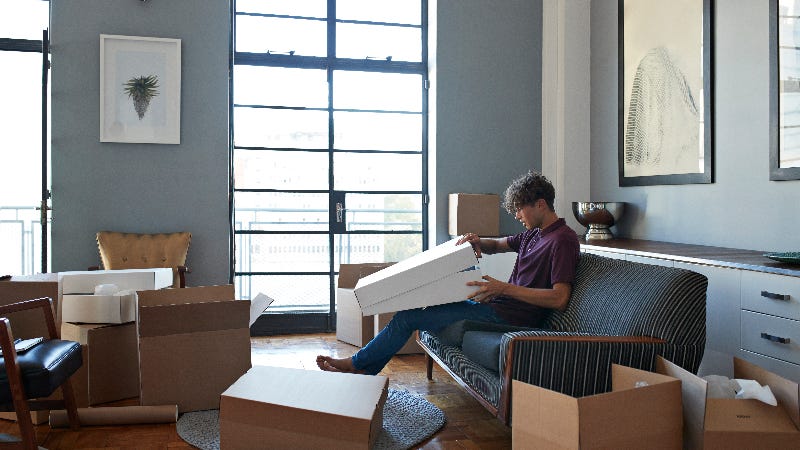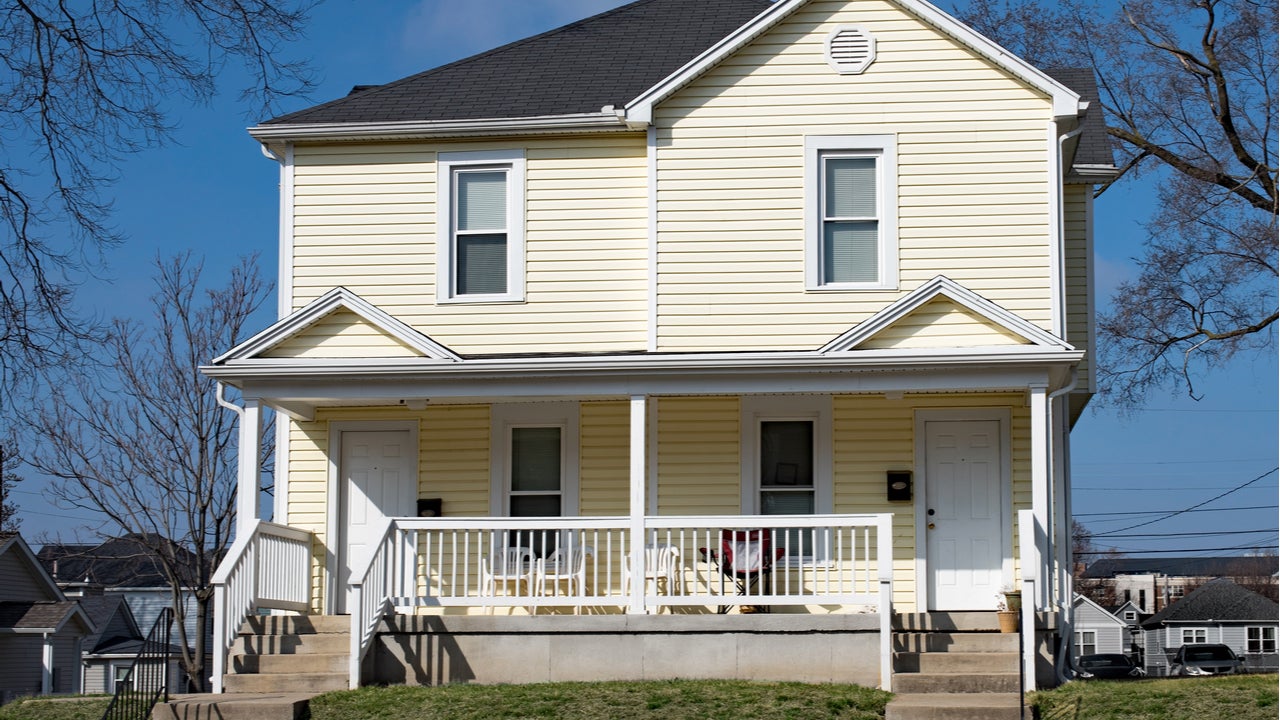What is an apartment?




Choosing a place to live comes with a lot of big decisions, but deciding on the type of housing that fits your needs and lifestyle is the first step.
Many people like the convenience and flexibility of living in an apartment, especially if they are new to a city or don’t want the responsibility of dealing with a detached dwelling’s upkeep. Apartments are often rentals, so of course they are also ideal for those who can’t afford to own a home just yet.
Let’s explore what an apartment is and who is best suited for apartment-style living.
What is an apartment?
An apartment is a residential unit that is part of one (or several) residential buildings, or a separate dwelling within a house with its own entrance, bathroom and kitchen. Apartments are typically one-story units within a multifamily or multi-unit building. Depending on the number of units it contains, the building itself may be commercial property, but the units themselves are residential real estate.
There is typically one owner or management company for all the units who does the maintenance and upkeep for the common areas and repairs for infrastructure in the individual units. Although apartments can be owned — as in co-ops or condos — they’re usually associated with a rented residence.
The rental lease options are flexible and can range from a few months to one year, which is usually the most popular lease term. Apartment renters usually have access to common areas such as a gym, pool, covered parking and trash disposal.According to 2022 data from the United States Census Bureau, there are nearly 44 million renter-occupied households in the U.S.
Other names for apartments
While apartments and flats are generally similar residential dwellings, the word apartment is used commonly in the U.S. while the word flat is synonymous with apartments in the U.K. and Australia. The term flat comes from the old English word “flett,” meaning floor or dwelling, says Jason Doyle Spencer, a Dallas-based Realtor with Dave Perry-Miller Real Estate.
Other similar terms for the same type of residential dwelling are walk-ups and brownstones, which are actually row houses that can be comprised of individual apartment units, says Tristen Heimann, director of residential rentals with Luxury Living Chicago Realty. Brownstones and walk-ups (as that name implies) don’t have elevators, unlike apartments in large buildings, however.
Apartments may also be referred to as high-rises or townhouses. High-rises are often found in large cities, and as their name suggests, they’re tall buildings that contain dozens, even hundreds of apartments. Townhouses may be available for rent or purchase, and are often three, four or five stories tall.
Types of apartments
Depending on where you live, you might find a few different types of apartments if you’re looking to rent or purchase property. Options include:
Rentals
Rental apartments may include units in multifamily homes, high-rise buildings, or other types of multi-unit buildings. Renters typically sign a lease, often with a term of one to two years. Generally, renters have a building or property manager that’s responsible for unit maintenance.
Condos
Rental apartments and condos have many similarities, often having similar amenities such as manicured green spaces and shared walls. Condos are units within buildings that are owned by individuals instead of being leased.
Owners of condos must pay for the maintenance of the unit through monthly carrying charges (aka HOA fees) and special assessments; they also pay property taxes. A condo owner often has the option of renting out the unit to a tenant and earns equity by making monthly mortgage payments.
Co-ops
A co-op works slightly differently than a rental apartment or condo, though it may also have similar amenities. Co-ops are also units within buildings, though the units are jointly owned by a housing cooperative, a corporate association of the building’s residents.
So instead of purchasing a particular unit in a building, you’re buying shares in this resident-owned housing corporation. In exchange, you get to reside at the property: Your shares take the form of the apartment. Co-op owners pay monthly maintenance fees, which can be partially tax deductible, since the building’s mortgage payments and property taxes are rolled into them. They don’t pay property taxes on their own. Co-ops are common in large cities like New York.
Should I rent or own an apartment?
As indicated above, “apartment” is a generic term that refers to a style or type of residence. Apartments can be owned or rented.
Deciding whether to own an apartment or lease it often depends primarily on your financial situation: income, assets and creditworthiness (which impacts your ability to get a mortgage to buy a home). Obviously, renting requires less money than owning does. However, in the inflationary environment of the early 2020s, the gap between the monthly costs of renting and of homeowning is fast closing. In fact, in September of 2022, the Consumer Price Index showed both the rent index and the homeowners’ equivalent rent index rising by 0.8 percent.
Another factor that can impact your decision is the stage of life you are in, Heimann says. “If you know that you are going to stay in one spot for 10 years or so, then it might be wise to purchase,” he says. “However, if things are more transient with one’s career and personal needs, it makes a lot of sense to rent.”
Owning a property, even a smaller one such an apartment, means less financial flexibility and more costs beyond the mortgage, such as the fees paid to a condo board, property taxes and ongoing repair and maintenance expenses to the inside of the unit (which is the owner’s responsibility).
“Not being tied down with a mortgage and typically having resort-level amenities are appealing for many renters,” Heimann says.
Pros and cons of living in an apartment
Pros
- Affordability/flexibility. A rental apartment is less of a commitment than a home you own, allowing people to move to another apartment complex or to one in another part of the city or the country within a year or two. You also can choose from a shorter-term or long-term lease for rentals, depending on your needs.
- Access to multiple amenities. Living in an apartment has advantages, including access to amenities such as security, parking and trash pickup. Many apartment communities offer on-site fitness centers, swimming pools, sports courts, dog parks and even pet-washing stations, says Greg Curci, executive vice president at Morgan Properties, an apartment management and investment firm in King of Prussia, Pennsylvania.
- Units are move-in ready. Before you move in, rental apartments should receive a thorough cleaning, fresh paint and clean or often brand-new carpet, Spencer says. (If you plan to stay there for more than a year, ask how often the unit will be refreshed.) However, this may not be the case if you buy a condo or co-op, unless your purchase agreement specifies it.
- Expenses are typically fixed. Renting an apartment is a more accessible option for many people compared to owning a house since the only upfront cost is usually a security deposit and first month’s rent, Curci says. Condo fees and maintenance fees for co-ops are generally fixed costs as well (though they can and often do rise each year).
- No hassling with maintenance. “From a convenience standpoint, a renter is spared the aggravation of dealing with repairs and maintenance to their home,” Curci says. All maintenance such as repairing a garbage disposal is conducted by the landlord.
Cons
- You won’t build equity. Sure, there are fewer upfront costs to renting an apartment. But you lose out on the opportunity to acquire an asset and build long-term wealth through ownership. And, today, there are several loan programs designed for first-time homebuyers that require little to no money down, as well as first-time homebuyer assistance programs to help with the down payment and closing costs.
- Lack of parking. Parking can be a challenge for those who reside in apartment complexes without allocated parking, says Holly McQueen, vice president at GMH Capital Partners, a Newtown Square, Pennsylvania-based real estate investment company. “This can also pose a problem for visitors because some areas require permits or payment for street parking,” she says.
- Limited privacy. Living in an apartment means you’ll likely share walls and you probably will have people living above and/or below you. And that might lead to more noise, less privacy and annoyances — like smoke or odors penetrating into your unit.
- Restrictions. Some apartments don’t allow pets at all, or have strict guidelines about how many and what kinds of pets you can keep in your unit. There could be other restrictions, as well, that conflict with your lifestyle. For instance, some apartments prohibit smoking or have no storage space for bikes.
- Lack of personalization. If you don’t own your apartment unit, you might be restricted to what you can do with it. Many apartment leases spell out that renters cannot paint walls, change appliances or install fixtures — including window treatments. “Often, paint, permanent stickers and major modifications are not allowed or will need corporate approval,” McQueen says. “The cost of restoring the apartment is the resident’s responsibility and [that] could be more than the deposit.” With owned apartments, you have no say over landscaping or the common areas’ decor, even though you help pay for these things.
- Limited expansion. Even if you own your apartment, it can be difficult to add on or remodel, as you often share walls with your neighbors. Unless you also buy the unit next door, your expansion opportunities are limited.
Who are apartments best suited for?
While many apartment dwellers are younger, single people who move often for jobs or don’t want the obligation of a mortgage, the demographics of individuals living in apartments is changing. There are more Gen Xers and Baby Boomers who want simpler living arrangements and to leave the hassle of maintenance behind as they age. Many apartments are in effect like assisted-living facilities — they are often single-level and have a staff on call — which makes aging-in-place easier.
According to 2022 data from the Joint Center for Housing Studies at Harvard University, 7.2 million rented properties were headed by an adult over age 65 in 2019, and that number is set to increase by 4 million by 2039.
The maintenance-free lifestyle is another big reason why people are renting, Heimann says.
“Many Baby Boomers are relocating back to the city and downsizing into these new amenitized buildings,” he says. “They do not need to worry about mowing the lawn, shoveling snow, fixing appliances or even replacing the light bulbs. It’s all taken care of within 24 hours at most luxury apartments.”
In reality, apartments are suited for anyone looking to stay in a prime location for a cheaper price near shopping, restaurant and entertainment centers, often at a more affordable cost than buying a condo or single-family home, Curci says.
Find other housing types:
| House type | Who it’s right for: |
|---|---|
| Apartment | Apartments are suited for anyone looking to stay in a prime location near shopping, restaurant and entertainment centers, often at a more affordable cost than buying a condo or single-family home. |
| Condominium | Condos appeal to those looking for a lower-maintenance living, home with a sense of security, opportunities to be social with neighbors, among other factors. |
| Townhouse | Townhouses are a particularly good option or first-time homebuyers or other budget-minded home buyers who want more space than typically afforded in a condo. |
| Modular home | Modular homes are enticing to empty-nesters looking to downsize, couples looking for backyard units like tiny homes or families looking to upgrade their dated properties in nice but expensive neighborhoods. |
| Single-family home | Single-family homes are best for families who prefer a huge yard and plenty of room to spread out. Others still prefer a low-maintenance condo or townhome that includes benefits like landscaping, snow removal and exterior maintenance. |
| Multi-family home | Multi-family homes are best for those who are interested in getting into real estate investing and are comfortable with the added responsibility and time commitment that comes with being a landlord. |
| Bungalow home | At between 1,000 and 2,000 square feet, bungalows are a great option for young families looking for a starter home or retirees hoping to downsize in a home without stairs, or single homeowners who want the single-family home lifestyle without managing a huge property. |
| Co-op | Co-ops are most often found in major cities, and they can be good for those looking for security or neighbors who largely adhere to the building’s rules and policies. |
| Patio home | Typically capped at one-and-a-half stories and part of a larger association, patio homes are best for homeowners who don’t want to deal with stairs or maintenance. |
| Ranch home | Ranch homes are ideal for anyone who prefers single-story living. Singles, couples and families with children can find something to love about a ranch home. |
Why we ask for feedback Your feedback helps us improve our content and services. It takes less than a minute to complete.
Your responses are anonymous and will only be used for improving our website.
You may also like




